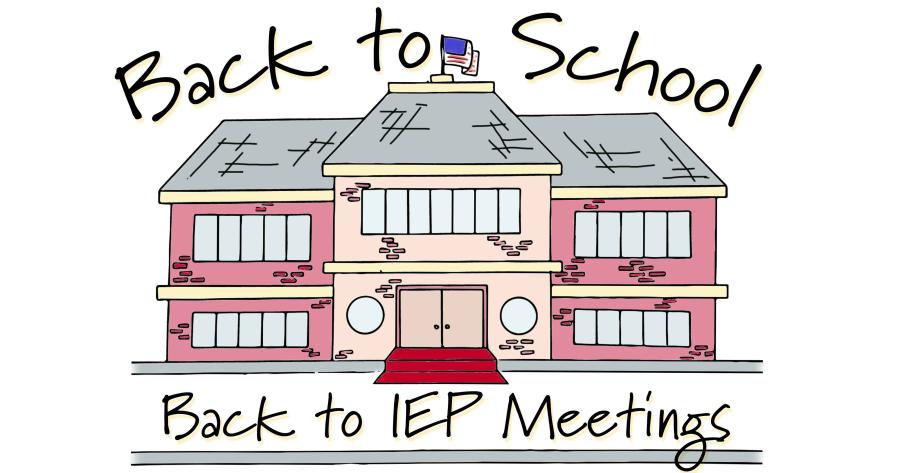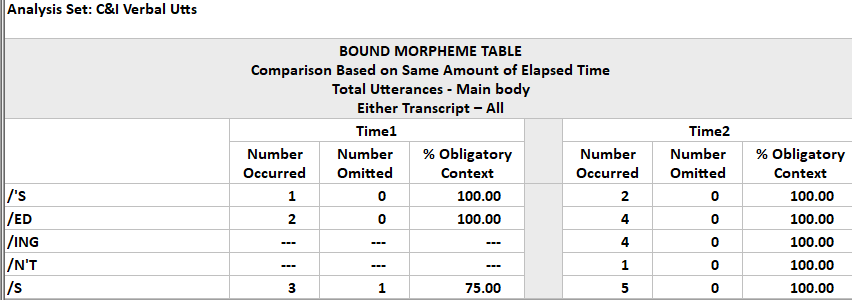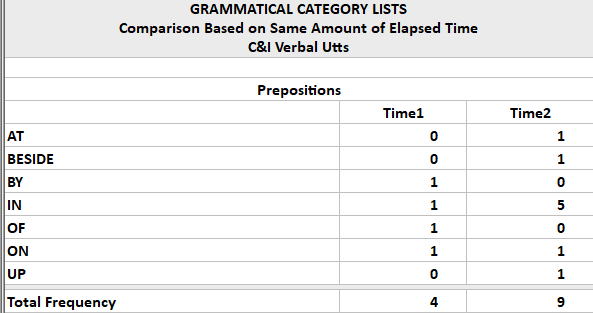
Back to School, Back to IEP Meetings!

Back to School, Back to IEP Meetings!
Published at: 2021-01-26
As school-based SLPs head back to school this fall, we no doubt will be thinking about impending IEPs. All of those before and after school meetings are an essential part of our job. Most IEP meetings go off without a hitch and we walk away feeling confident that we are making a difference in the student’s education. Other IEPs can be more litigious with debates over services, placement, or lack of educational progress. IEPs can be confusing for parents who are inundated with data from SLPs, OTs, PTs, learning support teachers, general education teachers, and school psychologists. How could you not be overwhelmed sitting at a table with a team of experts who are all talking about your child? It’s a lot to take in! IEP data should be easy to understand for parents. Personally, I try to simplify my data and make it short and to the point. What are the main points that I want to get across to parents without going into so much technical jargon that they become overwhelmed? And how can I get these points across without taking up so much time in the IEP meeting? One thing that I hear from parents is, “The school says ‘Timmy’ is doing fine, but I don’t think he is.” I understand this point of view. I’ve had this same thought as a parent myself. Is my child really progressing? From the outside looking in it can be hard to detect small incremental changes on IEP goals. Language growth and change can be subtle and slow-going, but using language sample analysis can help document these subtle changes over time and SALT can generate easy-to-understand data. Let’s look at some possible examples of easy-to-understand data generated from SALT that could be shared during an IEP meeting. In the preschool/kindergarten age range one goal might be increasing use of morphemes (-ing, -s,-ed) if the student is not yet using these grammatical markers. Perhaps the SLP wants to look at time 1 (baseline) and time 2 (annual IEP goal update) to see the student’s diversity and frequency of use of bound morphemes according to the IEP goal “…use bound morphemes - ed,-s, -ing in a conversation…”. In Figure 1 (below) the SLP took two short conversational samples and linked them in SALT based on the same amount of elapsed time. The SLP ran the Bound Morpheme Tables from the Analyze menu. This table provides clear data on the morphemes produced and shows (small) growth on use of past tense -ed from two times in the first sample to four times in the second sample. Use of progressive –ing increased from zero in the first sample to four times in the second and plural –s increased from three to five times. This is easy for parents and IEP teams to understand. The language sample documents the change over time. Keep in mind too, that this is in a conversational sample so we can assume that the student is generalizing the therapy targets since the data was collected in a naturalistic context. Again, this is an incremental change, but it does show growth and progress with the goal!  Another goal for younger students might be increasing the use of spatial terms (prepositions). This is easy to analyze and track using the Grammatical Categories Report from the Analyze menu in SALT. Figure 2 shows the type and total count of all prepositional words used in the language sample at baseline (time 1) and then after therapy targeted prepositions (time 2). This report is easy to understand and can be printed or incorporated into diagnostic reports.
Another goal for younger students might be increasing the use of spatial terms (prepositions). This is easy to analyze and track using the Grammatical Categories Report from the Analyze menu in SALT. Figure 2 shows the type and total count of all prepositional words used in the language sample at baseline (time 1) and then after therapy targeted prepositions (time 2). This report is easy to understand and can be printed or incorporated into diagnostic reports.  With older children, SLPs may be working on goals that address sentence structure- use of various sentence types, use of conjunctions to generate more sophisticated syntax, etc. Language samples can be scored for the Subordination Index in SALT. The Subordination Index (SI), in a nutshell, is the number of clauses per c-unit. The more sophisticated the syntax, the longer the utterances with more use of conjunctions and complex structures. SALT facilitates the scoring of SI. I find that it takes about five minutes or less to score a transcript for SI. Small changes over time can be captured by applying the SI without inundating the team with data about specific types of complex sentence structures. SI is a number! For story retell language samples, our reference data shows a linear increase in SI scores by grade (see table below). SLPs can easily collect story retells (time one/time two), score for SI, and report on an increase in the SI score (hopefully!). SI scores can also be compared to the SALT reference data base for even more analysis.
With older children, SLPs may be working on goals that address sentence structure- use of various sentence types, use of conjunctions to generate more sophisticated syntax, etc. Language samples can be scored for the Subordination Index in SALT. The Subordination Index (SI), in a nutshell, is the number of clauses per c-unit. The more sophisticated the syntax, the longer the utterances with more use of conjunctions and complex structures. SALT facilitates the scoring of SI. I find that it takes about five minutes or less to score a transcript for SI. Small changes over time can be captured by applying the SI without inundating the team with data about specific types of complex sentence structures. SI is a number! For story retell language samples, our reference data shows a linear increase in SI scores by grade (see table below). SLPs can easily collect story retells (time one/time two), score for SI, and report on an increase in the SI score (hopefully!). SI scores can also be compared to the SALT reference data base for even more analysis.
| Grade | Story | SI Score |
| K | Frog, Where are you? | 1.09 |
| 1 | Frog, Where are you? | 1.13 |
| 2 | Pookins Gets Her Way | 1.28 |
| 3 | A Porcupine Named Fluffy | 1.26 |
| 4 | Dr. De Soto | 1.43 |
| 5 | Dr. De Soto | 1.51 |
| 6 | Dr. De Soto | 1.52 |
These are just a few examples of how SALT can highlight progress on IEP goals that can be shared with team members. SALT quickly generates fine- grain analysis to highlight small incremental changes in language that may be overlooked from the outside looking in. We can walk into an IEP meeting ready to celebrate the accomplishments of our students and be supported with easy-to-explain data!
No Comments yet. Be the first to comment.